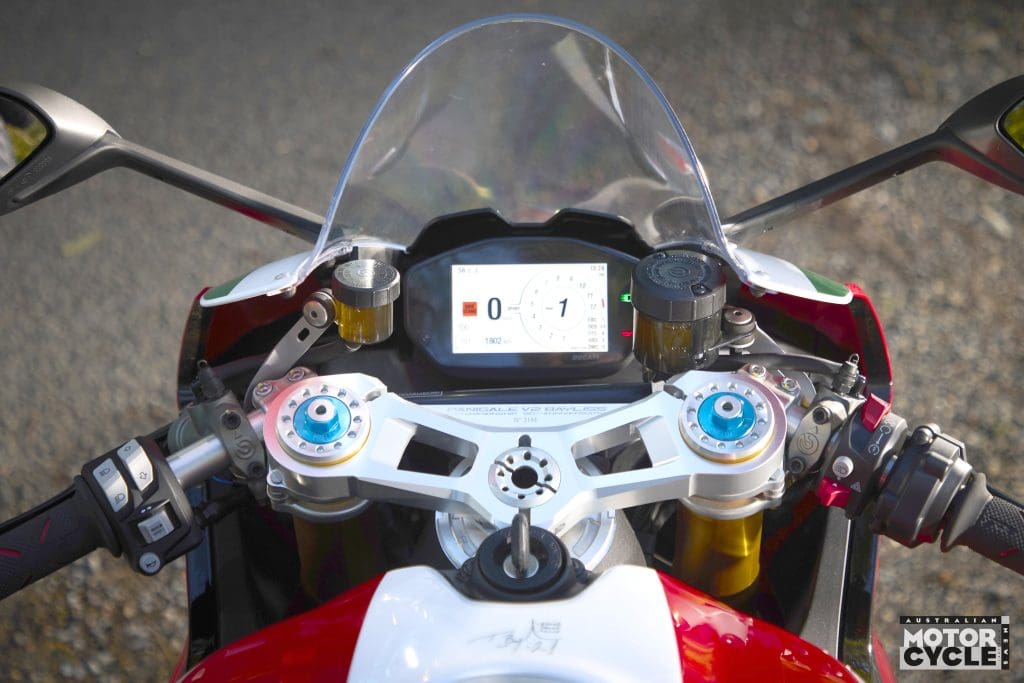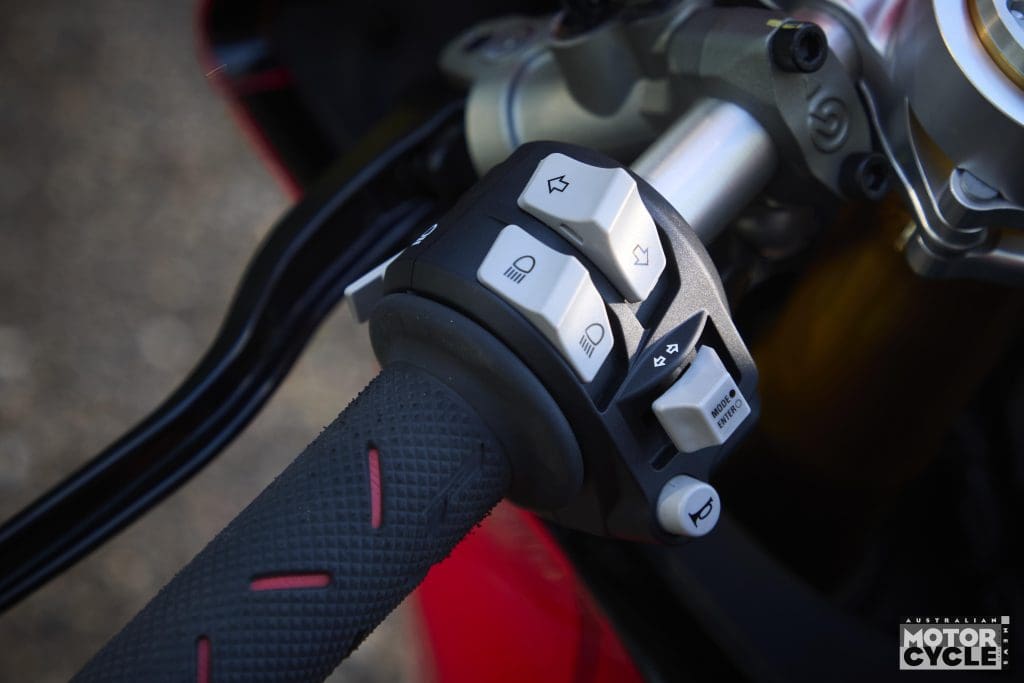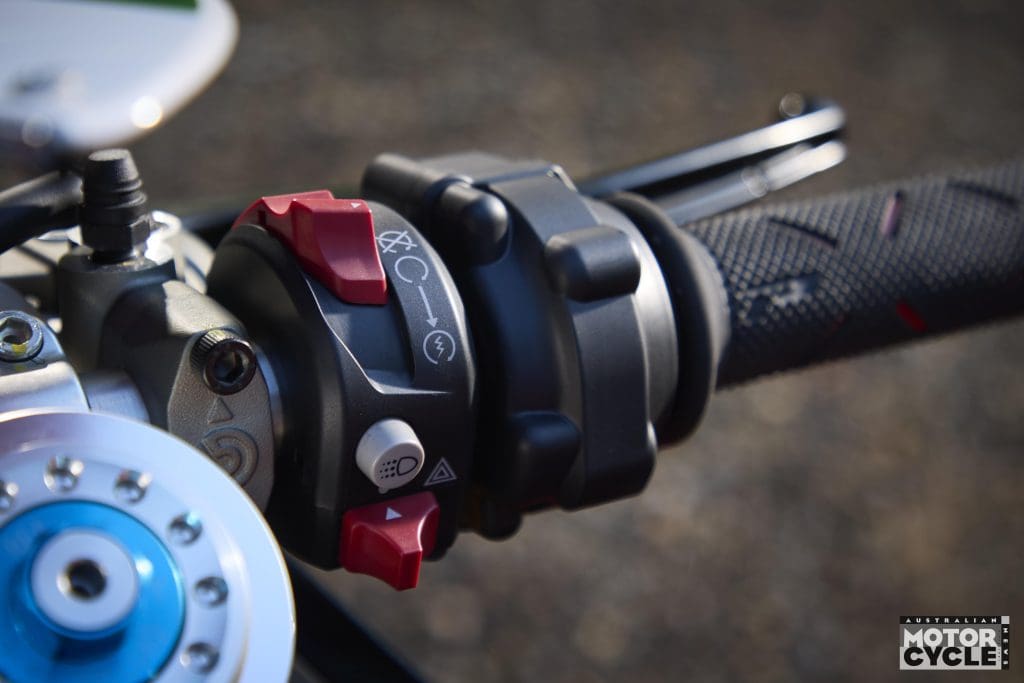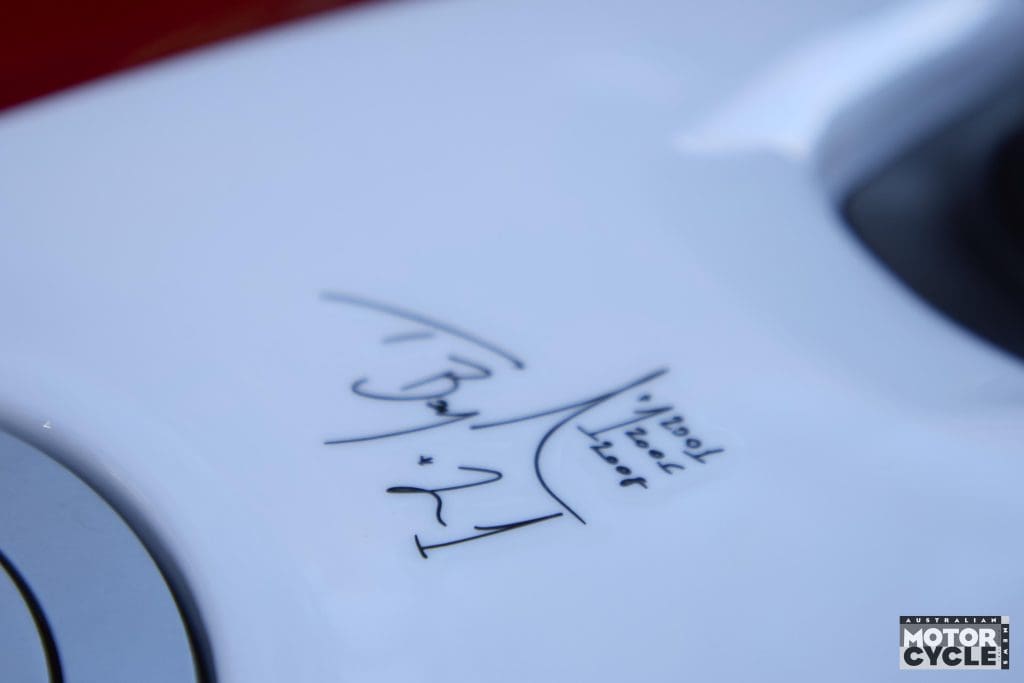This is the Ducati Panigale V2 Bayliss. In 2001 Troy Bayliss rode the wheels off a 996R to win his first of three WorldSBK titles and then continued on to become one of the most successful Ducati racers ever. He is the only Ducati rider to have won three world titles on three different models (the 996R, the 999 and the 1098R). Ducati has celebrated that first world title with a 20th anniversary Bayliss inspired, individually numbered, V-twin powered Panigale.
It features several high-end components also found on the recently released Panigale V2 Superquadro Final Edition, including race-spec suspension and brakes.
Superbikes have come a long way since 2001; back then, the World Superbike rules allowed a 1000cc twin to compete with 750cc 4-cylinder motorcycles. These days, Troy’s youngest son Oli is racing a Panigale V2 in World Supersport, where 1000cc twins race against 600cc four-cylinder machines, with some performance balancing to keep things even. So while the 955cc Panigale V2 is a similar engine spec to the 2001 Superbikes, it is not in the same league as the current Panigale V4 bikes racing in the Superbike category.
But let’s be honest, a slightly tamer version of the Superbike might be just what the doctor ordered for buyers looking for something that they can exploit more than a 210hp+ superbike.
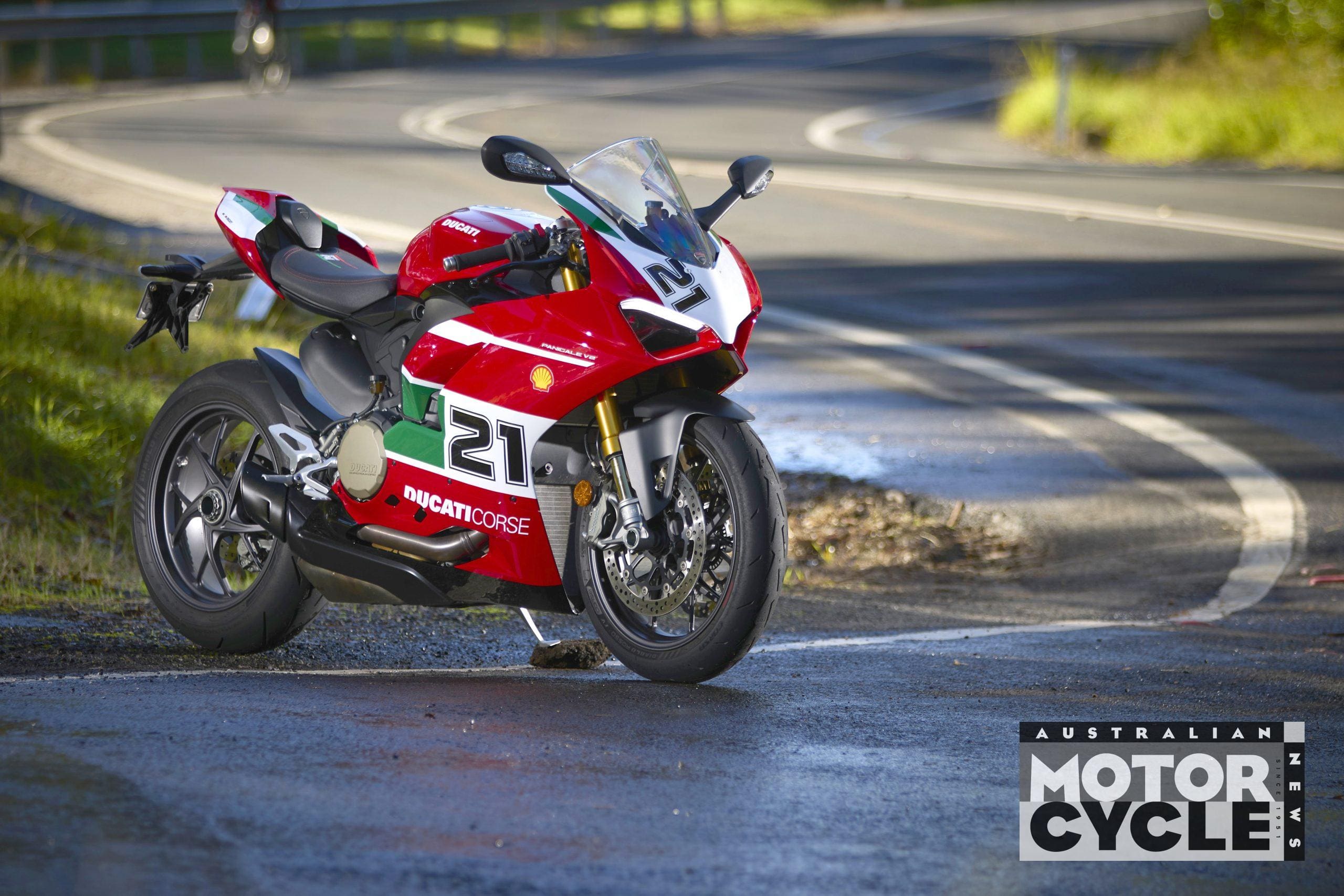
Starting off with a base model Panigale V2, which is already a great bike, the Bayliss edition gets extra performance parts to make it worthy of carrying the number 21 plate. The main performance boost comes from the up-spec Öhlins NIX30 fork and TTX36 rear shock. The Swedish equipment is fully adjustable front and rear and stands out from the base model with its gold titanium-nitride coated fork stanchions.
A non-performance accessory (although some might argue it adds 50hp), is the beautiful green-and-white accented paint job to replicate the memorable Infostrada livery complete with Shell logo and 21 numbers. The bike also comes in single-seat configuration with a lithium battery to reduce weight 3kg.
Other nice touches are a carbon muffler cover to make the stock exhaust system look a bit more trick, a grippier seat with 21 stitched into it, an adjustable Öhlins steering damper, grippy track-spec hand grips, Bayliss signature on the fuel tank and a beautiful billet-aluminium yoke complete with laser-etched special edition number. These add-ons attract a $4000 price increase.
The Panigale V2 is powered by a 955cc Superquadro V-twin engine with desmodromic valve operation. Putting out 114kW (153hp) and 104Nm of torque, it performs best higher in the rev-range. Yes, it’s a twin, so it is torquey, but the low-down hit isn’t what I was expecting. The V2 will hoik its front wheel towards the sky but, unless you forced the issue, not until the revs rise significantly. I feel the 937cc Testastretta engine found in the Superport 950 has more grunt off the bottom of the rev-range but obviously can’t hold a candle to the mid to top-end surge of the Superquadro. The power piles on all the way to the redline without any hesitation.
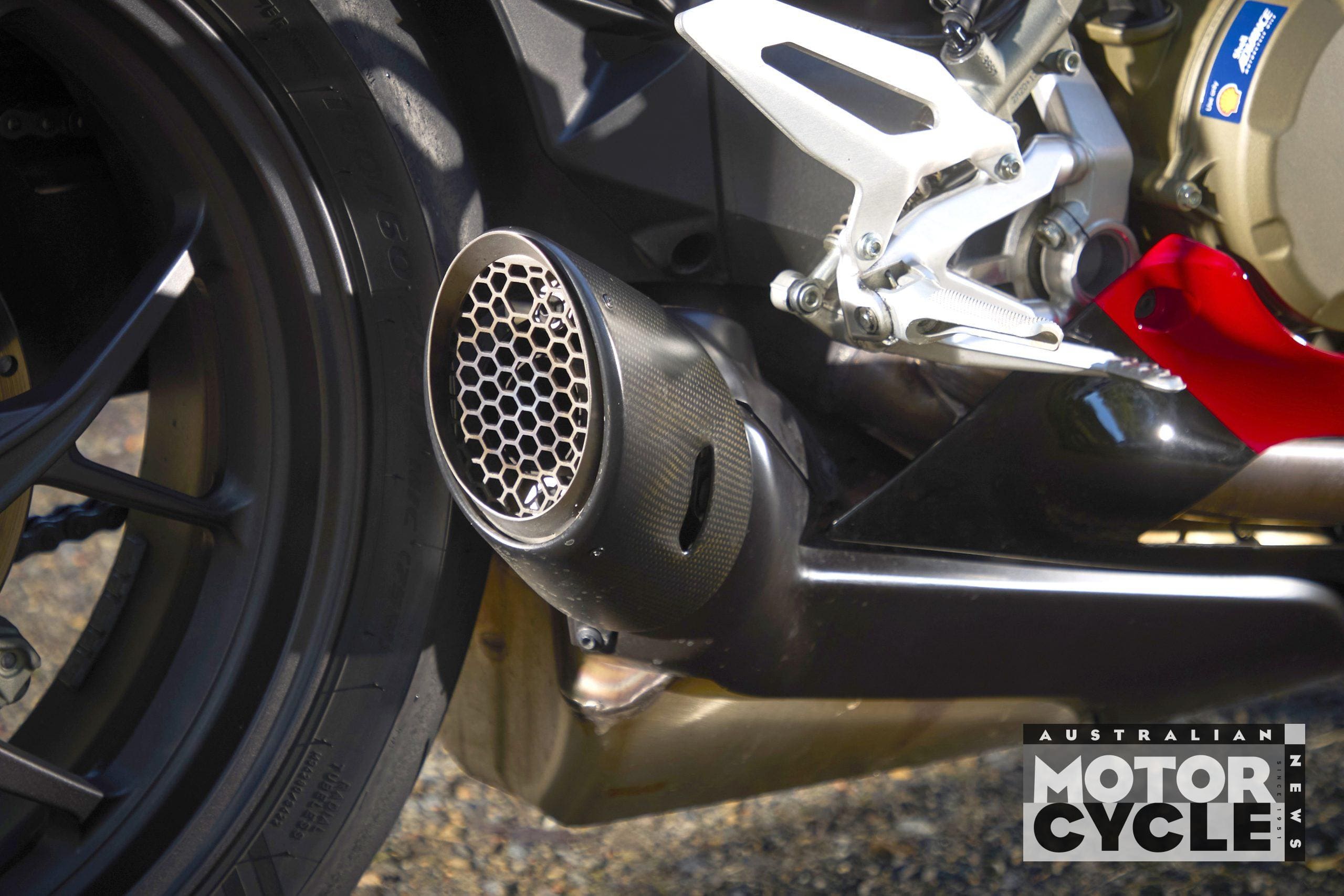
The sound is simply glorious as you rev it out through the gears using the excellent quickshifter. Nothing compares to the sound of a Ducati twin at full noise, even if it is muffled to adhere to Euro 5 emission standards.
Tech-wise, the V2 Bayliss is identical to the standard Panigale V2. It uses a six-axis IMU to monitor riding conditions and make appropriate decisions faster than you can blink an eye. The ABS Cornering Evo has some adjustability built in, too. You can opt for ultra-safety, or you can allow some sliding at the rear, trim it to allow the rear end to lift with ABS still active or turn the rear-end ABS completely off.
The Traction Control Evo is the same tech that the Panigale V4 R receives and can be adjusted by eight levels of intervention, while the wheelie control has three levels, as well as off. Quick Shift Evo is a two-way system that takes into account lean angles, engine RPM and throttle position. It works beautifully. Engine Brake Control Evo is also adjustable, while also clocking your lean angle, braking pressure, gear selection and throttle position to ensure optimal engine braking into corners. The bike is ready to accept the Ducati lap timer GPS system and also the Ducati Data Analyser + GPS plug-and-play system to really take your track riding to the next level by logging all your bike’s data for review after a session.
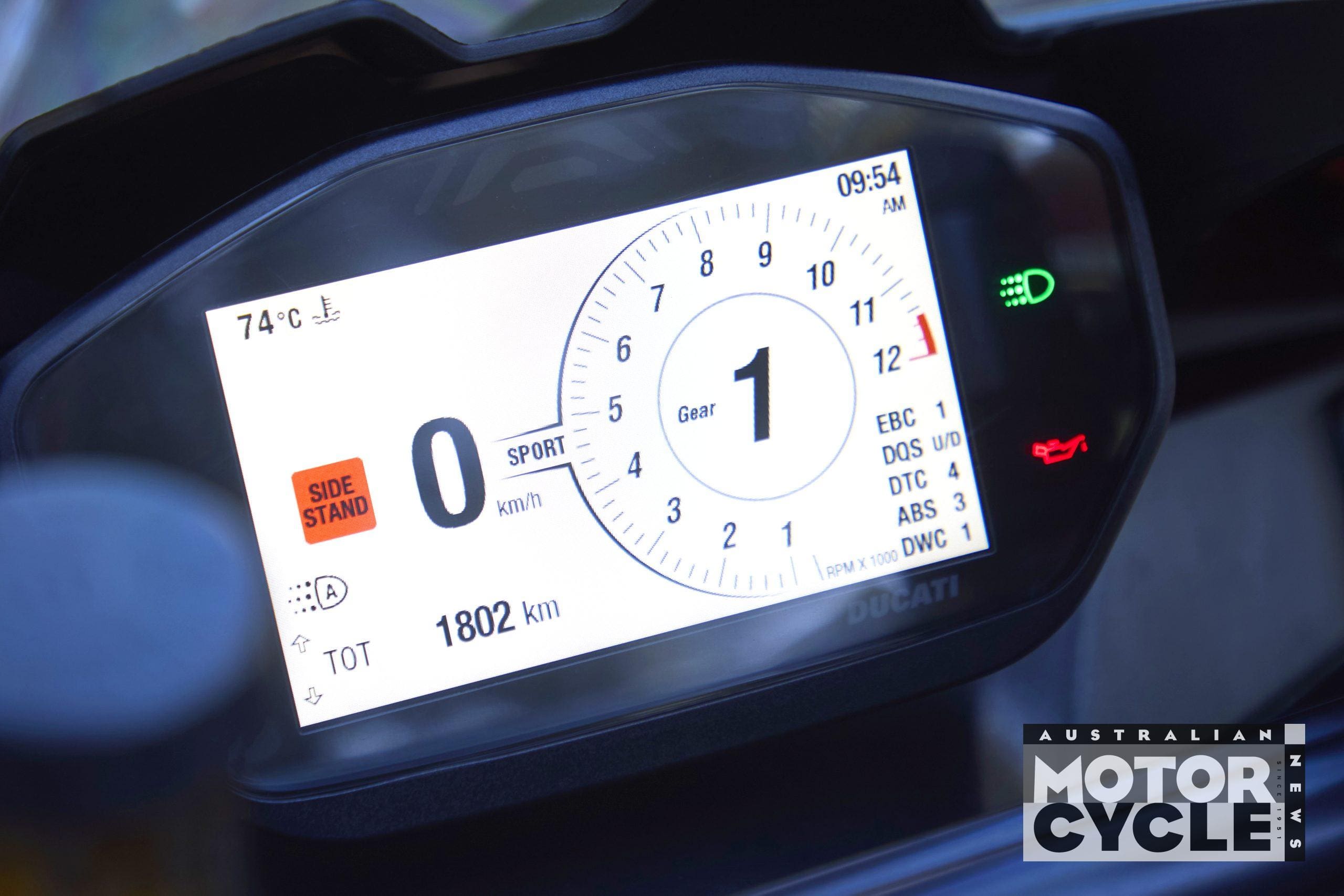
There are three ride modes, Road, Sport and Race, to choose from. Unsurprisingly, each one is fully customisable for engine/throttle map, traction control, quickshifter, ABS, wheelie control and engine brake control. Once you set up the modes to your liking, you can select them on the fly by holding the blinker-cancel button down and selecting the desired map then closing the throttle for a couple of seconds once instructed to do so on the dash
The dashboard is a very familiar item to Ducati riders; the same 4.3-inch TFT can be found on the Monster, Hypermotard and others in the range. It is simple to use and gives all the desired info without being complicated, although a fuel gauge might be nice. Especially if, like me, your old habits die hard. You see, I occasionally click the blinker cancel button to make sure my blinker is off. But if you have the trip meter selected on the V2’s display, one click of the blinker-cancel button (while the blinker is off) begins the process to reset the trip meter before a second click actually resets it. With no fuel gauge, I had been resetting my trip meter which meant I’d lost track of how far I’d ridden on a tank of fuel. Not the end of the world in built-up areas, but it could certainly catch someone out on a longer jaunt.
As well as looking as cool as a cucumber, the Öhlins suspension is excellent. The feedback through the fork and stiff chassis is precise and gives bulk confidence in the front end. One needs to carry the right-size Allen key to make the adjustments, however, as the onboard Allen key doesn’t fit the Öhlins clickers. Armed with the right tool, I could make changes and get a feel for the different settings. I ended up a few clicks stiffer than the standard settings as the front and rear springs were working overtime with my 100kg frame on the bike.
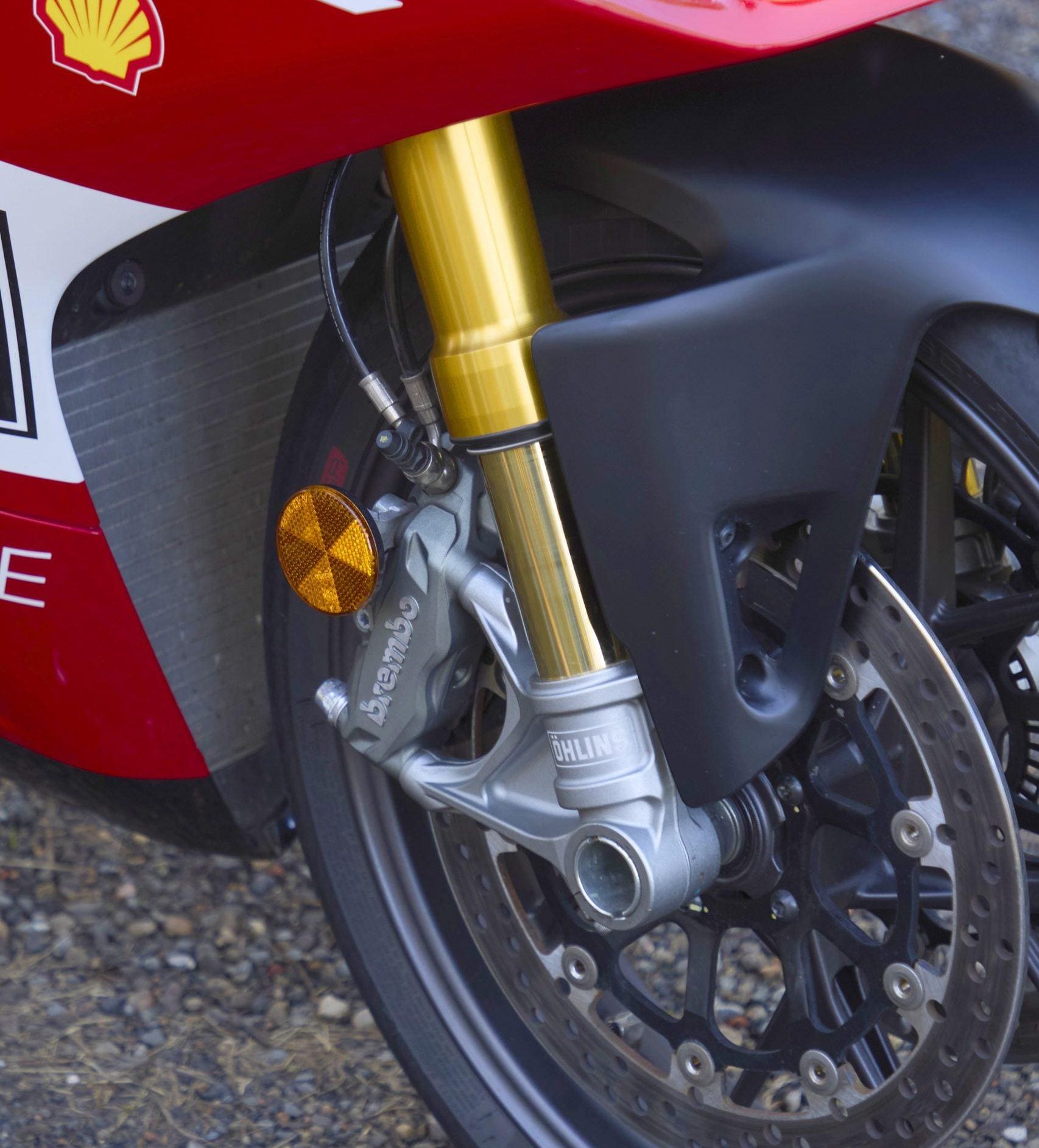
Once I stiffened things up, I enjoyed the ride a lot more because the V2 Bayliss simply loves corners. It feels light and agile and throws itself into them with next to no effort. Before you know it, you’ve apexed and can wind the power on and let the thing sing. I can see why the steering damper was added. On some sketchy roads it can get a little bit animated up near the redline, but settles itself pretty quickly.
I wish I could have taken the V2 Bayliss to the track as it is what the bike is built for but the stars didn’t align this time. On the road and in twisties it is an epic ride but its capabilities are impossible to explore fully.
The Brembo M4.32 calipers are perfect for the job. While they aren’t the top-spec Brembos, they do have a great feel to them and are super strong. I felt at ease running right into the corner trailing the front brake. They suit the bike perfectly.
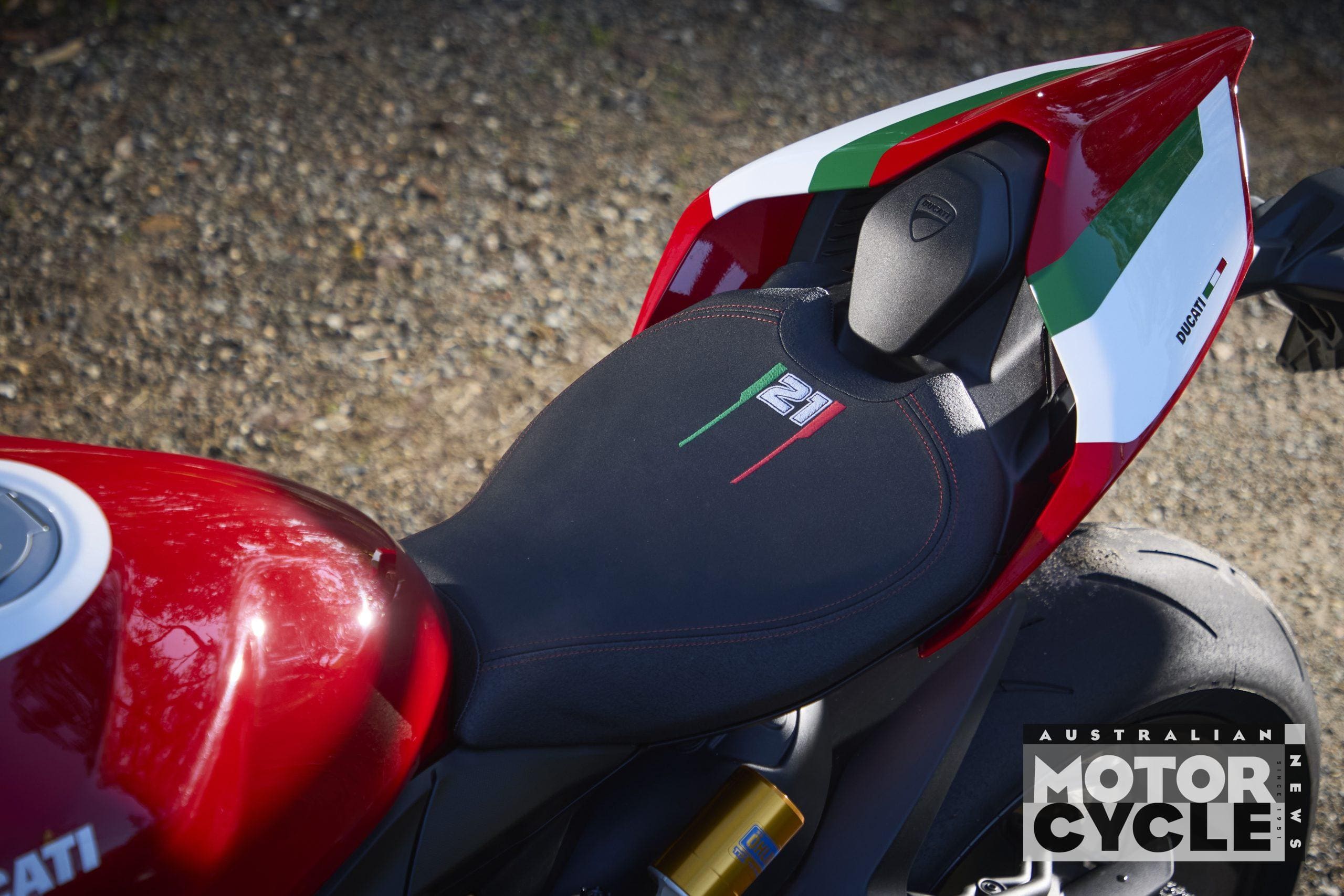
Comfort is certainly considered well after performance; it’s no Multistrada that’s for sure but a racebike with lights and should be treated as such. There is weight on your wrists, the reach to the ’bars is a small stretch, the mirrors are almost useless and the footpegs are mounted high. Riding to and from your favourite roads can be a bit punishing, but once there it all makes sense and I wouldn’t have it any other way. In traffic, there aren’t any unpleasant vibrations and the clutch feels nice and consistent.
It does run a bit warm. On a cold winter’s evening I thought the heated seat was nice – but that’s not a heated seat, it’s the exhaust underneath it. Nice in winter, but summer would be agony. The fuel tank holds 17 litres and with a measured consumption of 5.8L/100km, it should be capable of over 250km before refuelling, which is quite reasonable for a sportsbike.
At $30,400 (ride away), the V2 Bayliss is far from cheap, but does that mean it’s good value? Well, you get what you pay for. It is oozing with quality componentry and, to my eye at least, the Ducati simply can’t be matched in the looks department. There is billet alloy, carbon, Öhlins and Brembo everywhere. It is a droolworthy proposition for anyone keen on a bit of a collector’s item that you can enjoy on the road or the racetrack or maybe just the local coffee shop. Eccellente!
PROS: Looks fantastic, has high-level performance and is a fitting tribute to an icon.
CONS: Hard-edged for road use, not limited in build numbers and runs hot.
A TIP OF THE LID
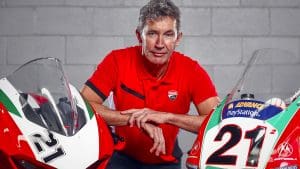
The bike Troy Bayliss rode to the 2001 Superbike World Championship was a full-factory Ducati 996R. Powered by a short-stroke 998cc Testastretta engine producing about 99kW (133hp) in road trim, it would become one of the most iconic Ducati roadbikes thanks to our Aussie mate.
The V2 Bayliss styling was chosen to mimic the 996R that he raced to that first world title, with the green on the side fairing inspired by the Infostrada sponsorship of the day, as well as the small Shell logo – Shell still partners with the Ducati factory today.
Only 500 of the original 996Rs were built and they sold in Australia for $52,000. When you think about it, it makes the V2 Bayliss feel like an absolute steal at $30,400, considering inflation and all the technology crammed into today’s bikes.
RIVAL RACERS
MV Agusta F3 RR

798cc triple
108kW/147hp
$37,695 ride away
Honda CBR600RR

599cc inline-four
89kW/119hp
$29,418 ride away
Kawasaki ZX-6R KRT Edition

636cc inline-four
95kW/129hp
$17,946 ride away
Ducati Panigale V2 Bayliss

955cc V-twin
114kW/153hp
$30,400 ride away
SPECIFICATIONS
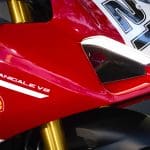
ENGINE
Capacity 955cc
Type V-twin, desmodromic, four valves per cylinder
Bore & stroke 100mm x 60.8mm
Compression ratio 12.5:1
Cooling Liquid
Fueling EFI, 2 x injectors per cylinder
Transmission Six-speed
Clutch Wet, multi-plate, slipper
Final drive Chain
PERFORMANCE
Power 114kW (153hp) @ 10,750rpm (claimed)
Torque 104Nm @ 9000rpm (claimed)
Top speed 280km/h (claimed)
Fuel consumption 5.8L/100km (measured)
ELECTRONICS
Type Magneti Marelli
Rider aids Cornering ABS, Ducati Traction Control Evo2,Quick Shift Evo, Ducati Wheelie Control Evo and Engine Brake Control Evo
Rider modes Street, Sport or Race
CHASSIS
Frame material Aluminium
Frame type Monocoque
Rake 24°
Trail 94mm
Wheelbase 1436mm
SUSPENSION
Type Öhlins
Front: 48mm NIX30 fork, fully adjustable, 120mm travel
Rear: TTX30 monoshock, fully adjustable, 130mm travel
WHEELS & BRAKES
Wheels Cast aluminium
Front: 17 x 3.5
Rear: 17 x 5.5
Tyres Pirelli Diablo Rosso Corsa IV
Front: 120/70R17 (58W)
Rear: 180/55R17 (75W)
Brakes Brembo
Front: Twin 320mm discs, four-piston M4.32 calipers
Rear: Single 245mm disc, twin-piston caliper
DIMENSIONS
Weight 190kg (no fuel, claimed)
Seat height 835mm
Width Not given
Height Not given
Length Not given
Ground clearance Not given
Fuel capacity 17L
SERVICING & WARRANTY
Servicing 1000km
Minor: 12,000km
Major: 24,000km
Warranty Two years, unlimited km
BUSINESS END
Price $30,400 (ride away)
Colour options Bayliss First Championship 20th Anniversary edition
CONTACT
www.ducati.com/au/en
